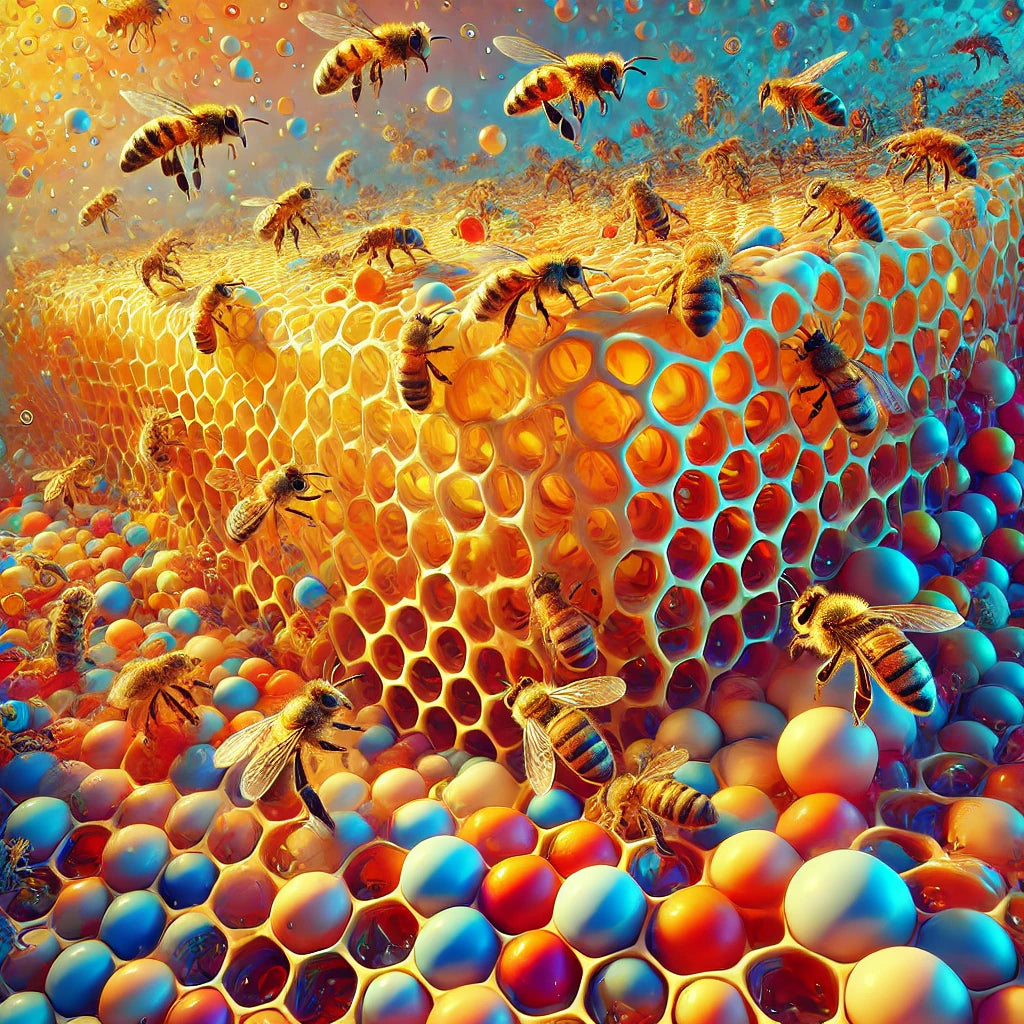Bees are known for their fascinating and sometimes perplexing behaviors, and leaf-cutting is no exception. When you spot holes in your garden’s leaves, you might wonder whether they’re perfect disks or ragged holes.
This article dives into the differences between these cuts, why bees make them, and how they contribute to pollination. We’ll also explore what these patterns reveal about the bees involved and how they interact with your plants.
What Are Honey Holes?
In the world of bees, honey holes refer to the small, precise circles or irregular shapes left in leaves by various bee species. These holes are often the work of leafcutting bees, which use these cut-outs to build their nests. If you notice perfect disks in your garden, it’s likely the result of a leafcutter bee at work, using the material for nest-building..
Perfect Disks: The Work of Leafcutter Bees
Leafcutter bees, part of the Megachile family, are known for creating clean, circular cuts from leaves. These perfect disks are collected and used to line their nests, providing a protective environment for their larvae. The bees typically target soft-leaved plants like roses and lilacs. Though it may look destructive, this behavior is an essential part of their nesting process and doesn’t cause long-term damage to plants.
Ragged Holes: What Do They Mean?
In contrast to the perfect disks made by leafcutters, ragged holes in leaves can indicate the work of other bees or insects. These cuts are often irregular in shape and may appear less precise. While not as neat as the work of leafcutter bees, these ragged edges still serve the purpose of providing nesting material or food. Understanding the type of hole can help you identify which pollinators are visiting your garden.
The Benefits of Honey Holes
Both perfect disks and ragged holes play important roles in the life cycle of bees. Leafcutters, for example, use these leaf fragments to build secure, insulated nests for their larvae. In turn, they provide essential pollination services to your garden, helping flowers, fruits, and vegetables grow. This natural process supports the overall health of your ecosystem and contributes to the numerous benefits of bees.
Supporting Pollinators with Honey Holes
You can encourage the creation of honey holes in your garden by planting native plants and providing suitable nesting materials, such as hollow stems or bee hotels. Avoiding pesticides is also crucial, as chemicals can disrupt bee behavior and nesting activities. Offering a variety of leaf types, from soft to tough, will support a range of pollinators and their unique needs..
Equip Your Garden for Bees with Swarm Commander
Understanding whether your garden leaves have perfect disks or ragged holes provides insight into the types of pollinators visiting your space. Each hole serves a purpose, supporting the reproduction and survival of important bee species. By fostering a bee-friendly environment, you’ll enhance pollination and help maintain the balance of your garden’s ecosystem.
Looking to make your garden more bee-friendly? Swarm Commander offers essential products like bee trap attractants or beetle traps for beehives and guides on bee hive relocation. Visit Swarm Commander for tools and resources to support your local bee population.
Frequently Asked Questions About Honey Holes
Q1. Why do bees cut holes in leaves?
Leafcutter bees cut perfect disks from leaves to build and line their nests.
Q2. What’s the difference between perfect disks and ragged holes?
Perfect disks are clean, circular cuts made by leafcutter bees, while ragged holes are often left by other insects or pollinators.
Q3. Do honey holes harm plants?
No, the small holes left by bees do not cause significant harm to plants and are part of a natural pollination process.
Q4. How can I encourage bees to create honey holes in my garden?
Plant a variety of flowers, avoid pesticides, and provide natural materials like hollow stems for nesting.
.Q5. What are the benefits of honey holes?
These holes support the nesting and reproduction of bees, contributing to improved pollination and healthier plants.



